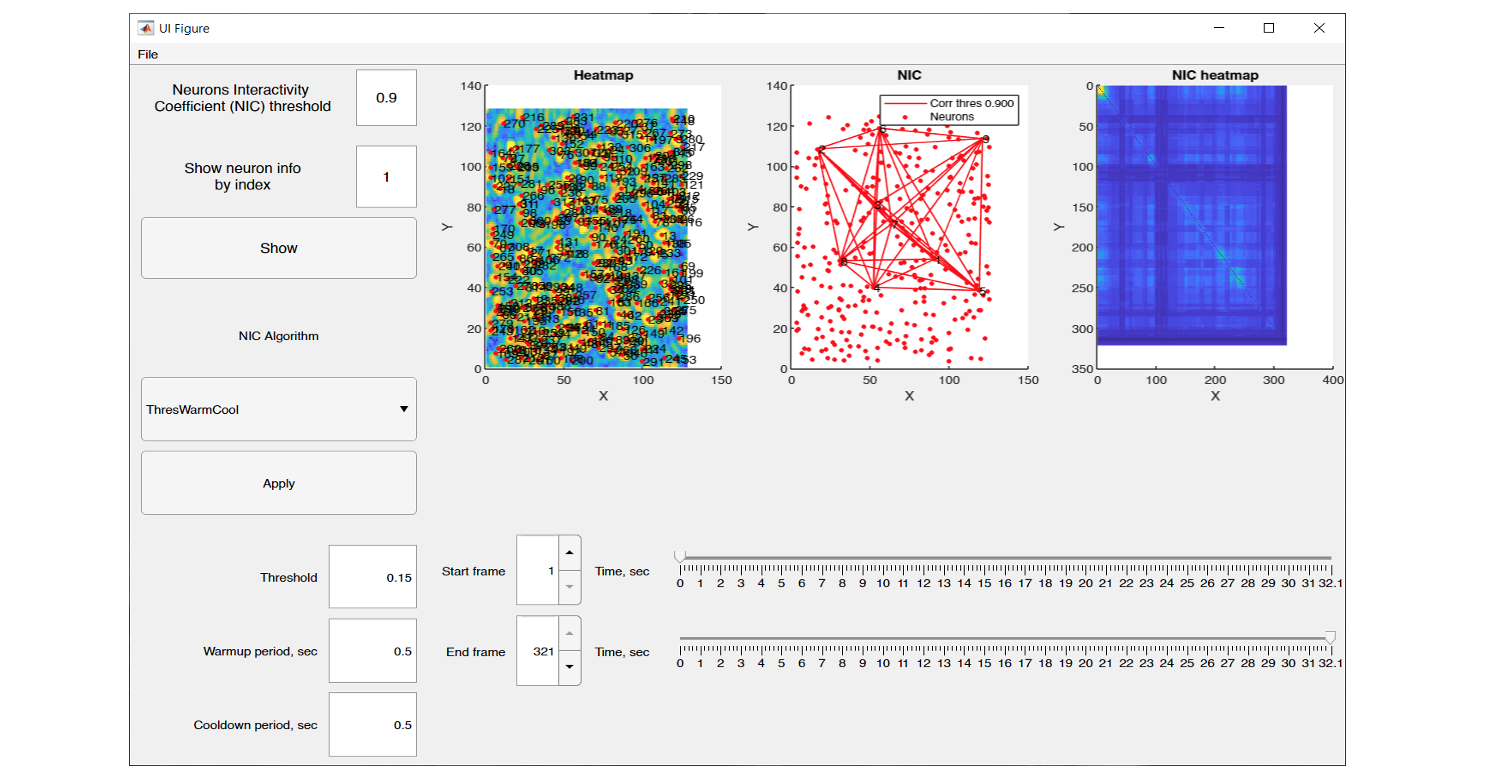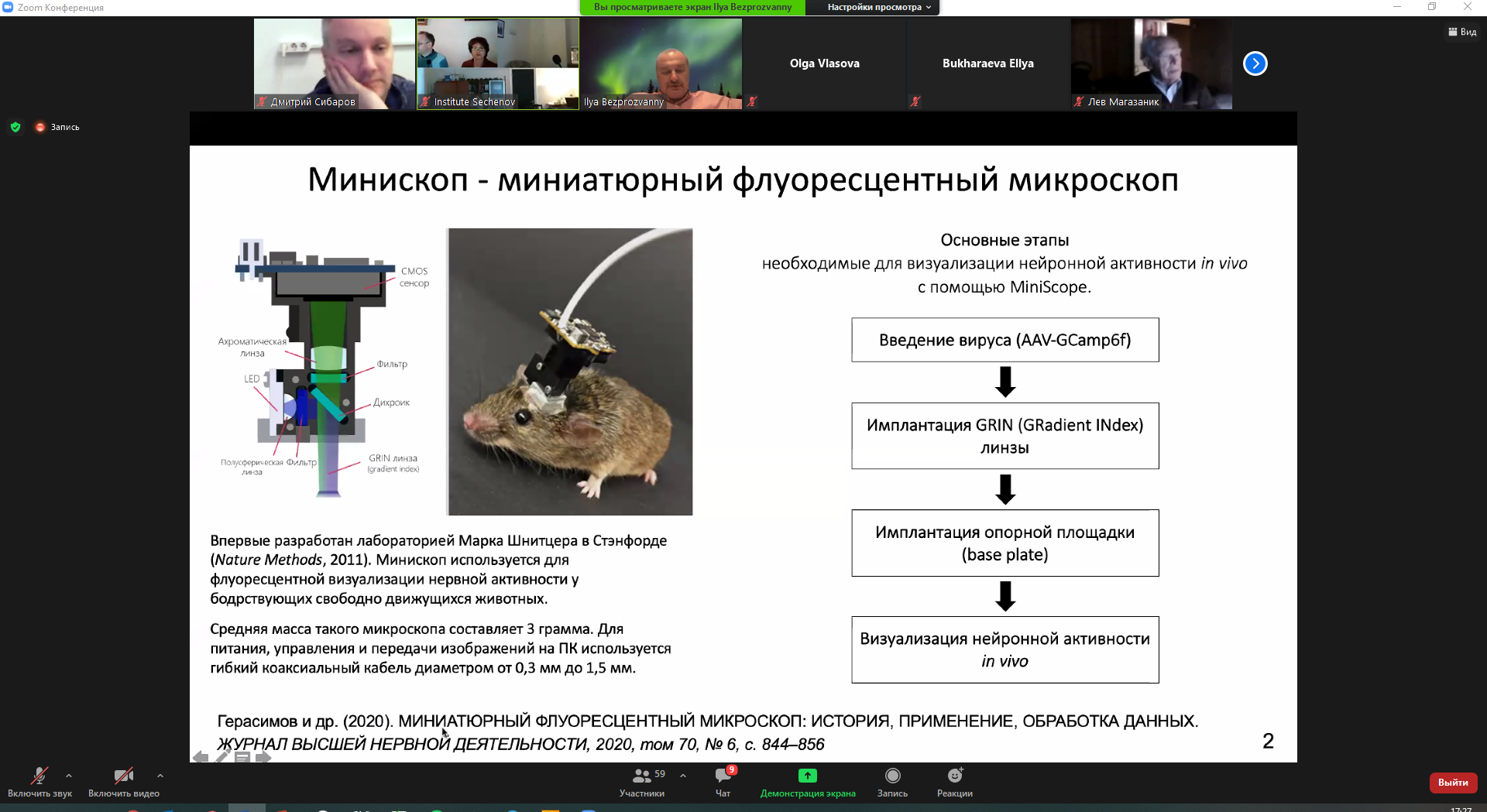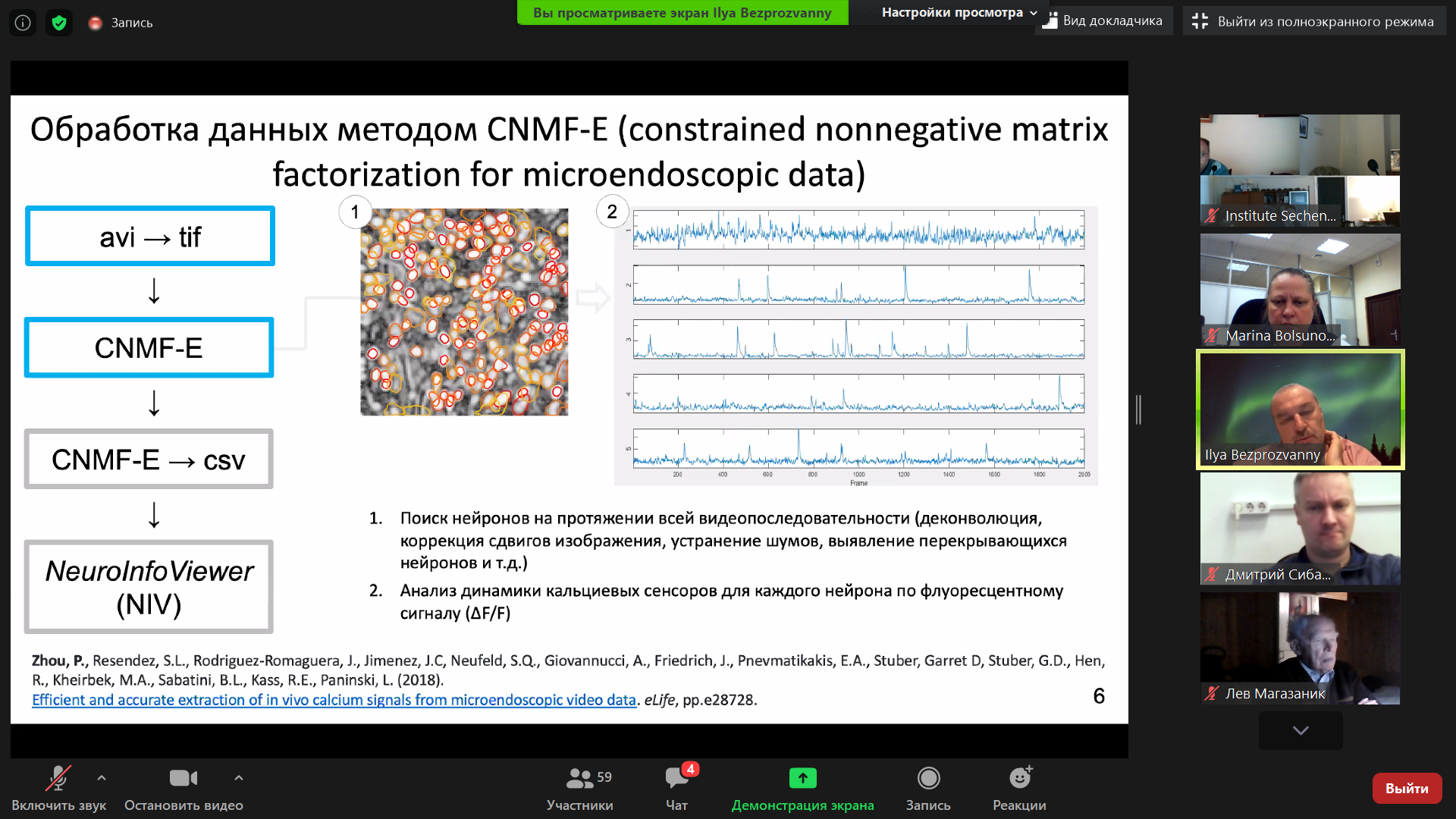The technology for analyzing brain activity patterns in laboratory mice for research in the field of neurodegenerative diseases was presented at the IEFB RAS conference
The ISSDP Laboratory of the SPbPU NTI Center participated in the development of a comprehensive software product for the collection, multiscale analysis, and visualization of experimental results.

On October 21, at the 16th All-Russia Conference on Evolutionary Physiology dedicated to the memory of academician L.A. Orbeli” (Orbeli-2020), organized by the Sechenov Institute of Evolutionary Physiology and Biochemistry of the Russian Academy of Sciences, a report entitled “Methods for Analyzing Miniscope Data” was presented.
The report includes the results of the “Investigation of neural network activity changes caused by neurodegenerative diseases using methods of artificial intelligence”. This project wasccarried out by the staff of the Industrial Systems for Streaming Data Processing Laboratory of the NTI Center of SPbPU and the Russian-Chinese Laboratory of Basic and Translational Neuroscience, created on the basis of the Institute of Biomedical Systems and Technologies (now HSBSiT IBSiB) of SPbPU.
Professor I.B. Bezprozvanny, Doctor of Biology, Head of the Project presented the report. Dr. Bezprozvanny is the head of the Laboratory of Molecular Neurodegeneration of SPbPU, Professor at the HSBSiT IBSiB SPbPU, Professor at the Department of Physiology and Head of the Laboratory at the Southwestern Medical Center of the University of Texas, Dallas (USA). The authors of the report included A.I. Erofeyev, E.I. Gerasimov, S.A. Pushkareva, D.S. Barinov, M.V. Bolsunovskaya, and O.L. Vlasova.

I.B. Bezprozvanny
One of the tasks of the project was to create a new digital tool for mathematical analysis of the data obtained from the experiment. The new software was designed to complement and develop the technology for visualizing brain neuronal activity in freely moving mice using a miniature fluorescence microscope (miniscope) implanted into the brain of the animals.
The use of a miniscope made it possible to obtain images of previously inaccessible populations of neurons deep in the brain and to record neuronal network activity in awake free-moving animals over a long period. The video recording generated a huge array of data representing discrete neuronal fluorescence signals. This technology was integrated into the Laboratory of Molecular Neurodegeneration at the WSBSiT Institute of Biomedical Engineering, SPbPU, under the guidance of I.B. Bezprozvannyi.
The enormous potential of the obtained information was obvious, but there was necessity of specialized software for further signal analysis to determine hidden patterns.
The software package NeuroInfoViewer, developed by Dmitry Barinov, the leading programmer of the SPbPU STI Center, provides for high-level analysis and construction of correlation dependence of neuronal activity. The input data are the results of third-party software for primary processing of video recordings with the algorithms of video quality enhancement, neuron detection, and fluorescence signal extraction (CNMF_E and MIN1PIPE).

NeuroInfoViewer prototype interface and data processing results from one of the experiments
The improved technology will help researchers to obtain qualitatively new data on the mechanism of pathogenesis of neurodegenerative diseases and mental disorders, which will further enable conclusions about the causes and potential ways to treat and prevent such ailments as Parkinson’s, Alzheimer’s, Huntington’s, etc.
________________________
[1] This study was supported by the grant from Peter the Great St. Petersburg Polytechnic University within the framework of the Program for increasing the competitiveness of the leading Russian universities among the leading world scientific and educational centers (Project 5-100-2020) for 2020 and with the support of the Russian Science Foundation grant 19-15-00184 (I.B). Implementation Period: March – October 2020.



